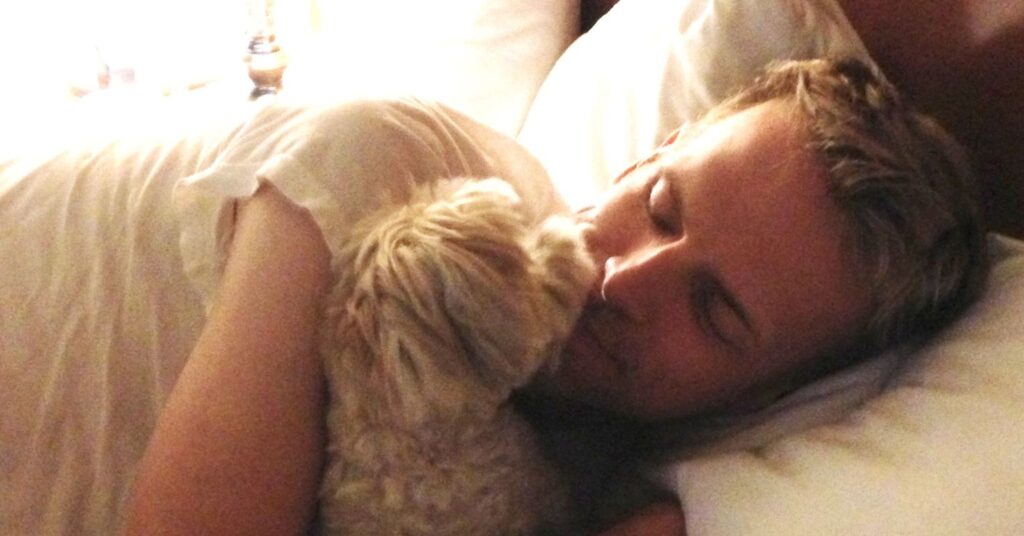After the recent loss of our cherished dog, Latte, to cancer, I have been grappling with the heavy burden of grief and trying to navigate through the lingering sadness that follows like a persistent shadow. Despite shedding countless tears, the sorrow remains, quiet and unyielding, with no clear outlet.
While reminiscing over old photographs from 15 years ago—Latte as a spirited, inquisitive puppy just starting training class—I recalled something the instructor mentioned that has stuck with me. She emphasized that the most crucial command to teach your dog is “stay.” This command can avert a potential tragedy in a moment of danger: be it traffic, an aggressive animal, or a harmful object concealed in the grass. “Stay” is about protection and presence.
Although Latte’s initial learned command was more along the lines of “Can I have a smooch?” to which he typically responded with a quick lick to the cheek, “stay” quickly followed, and he honored it diligently throughout his life. That is, until the very end, when I implored him to stay despite his cancer diagnosis, declining health, and treatments that could no longer aid his fragile body.
The Emotional Impact of Pet Loss
The grief that ensues following the loss of a pet is often misconstrued or downplayed, yet psychological studies tell a different story. According to research published in the Journal of Mental Health Counseling, the loss of a pet can trigger symptoms of acute grief that are akin to, and sometimes more intense than, the loss of a human companion (Adams, Bonnett, & Meek, 2000). Pets hold a unique emotional significance: they provide unconditional love, consistency, and often a daily sense of purpose and routine.
Insights from attachment theory, originally formulated by John Bowlby, help elucidate this bond. We form secure attachments to our pets, particularly when they are integrated into our lives as family members. When this attachment is severed, the emotional system that relied on their presence can be thrown into turmoil. Grief is not merely an emotion—it represents a neurological and psychological response to a perceived loss of safety, connection, and purpose (Bowlby, 1980).
I was deeply touched by the outpouring of support from neighbors following Latte’s passing. They brought food, offered solace, and shared their own experiences of pet loss. Many confessed that they had mourned their dogs or cats more profoundly than a parent or grandparent. Grief does not adhere to a hierarchy. The loss of a beloved pet signifies a loss of love itself—a love that is tangible, daily, and enriches the soul.
Creating Lasting Connections
We have recently welcomed a new addition into our household: Mocha, a lively and spirited puppy with a determined spirit and a penchant for mischief. She is nothing like Latte, showcasing her own vibrant personality. Despite this, Latte’s presence lingers—his memories, his teachings, his warmth. He serves as her unseen big brother, guiding us as we embark on teaching Mocha the commands and phrases that shaped Latte’s life—and will now shape hers.
(She already happily indulges in giving smooches upon request.)
Grief theorists such as Robert Neimeyer stress the significance of “continuing bonds”—the notion that healing from loss does not necessitate severing connections, but rather reshaping them (Neimeyer, 2001). While Latte may no longer be physically present, he remains with me in the most essential ways. A permanent fixture in my heart, Latte listens, comforts, and endures. “Stay,” I whispered as he drew his final breaths. And somehow, beautifully, he has.

